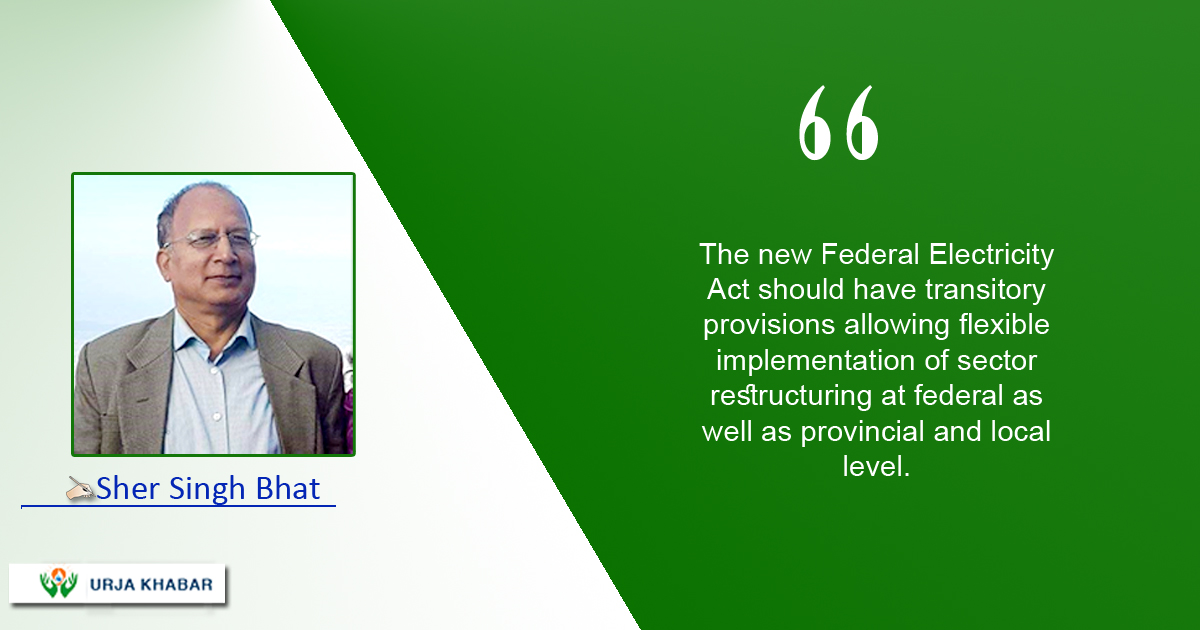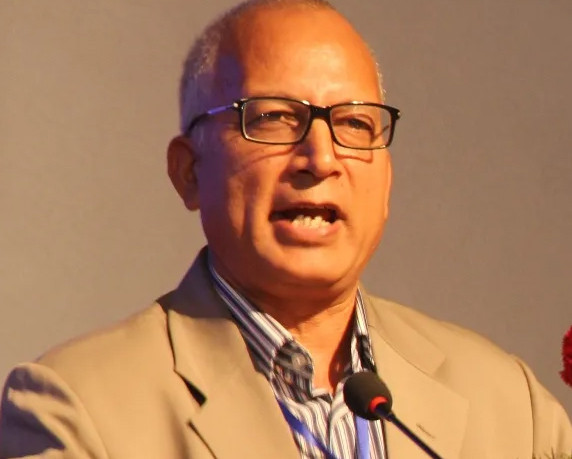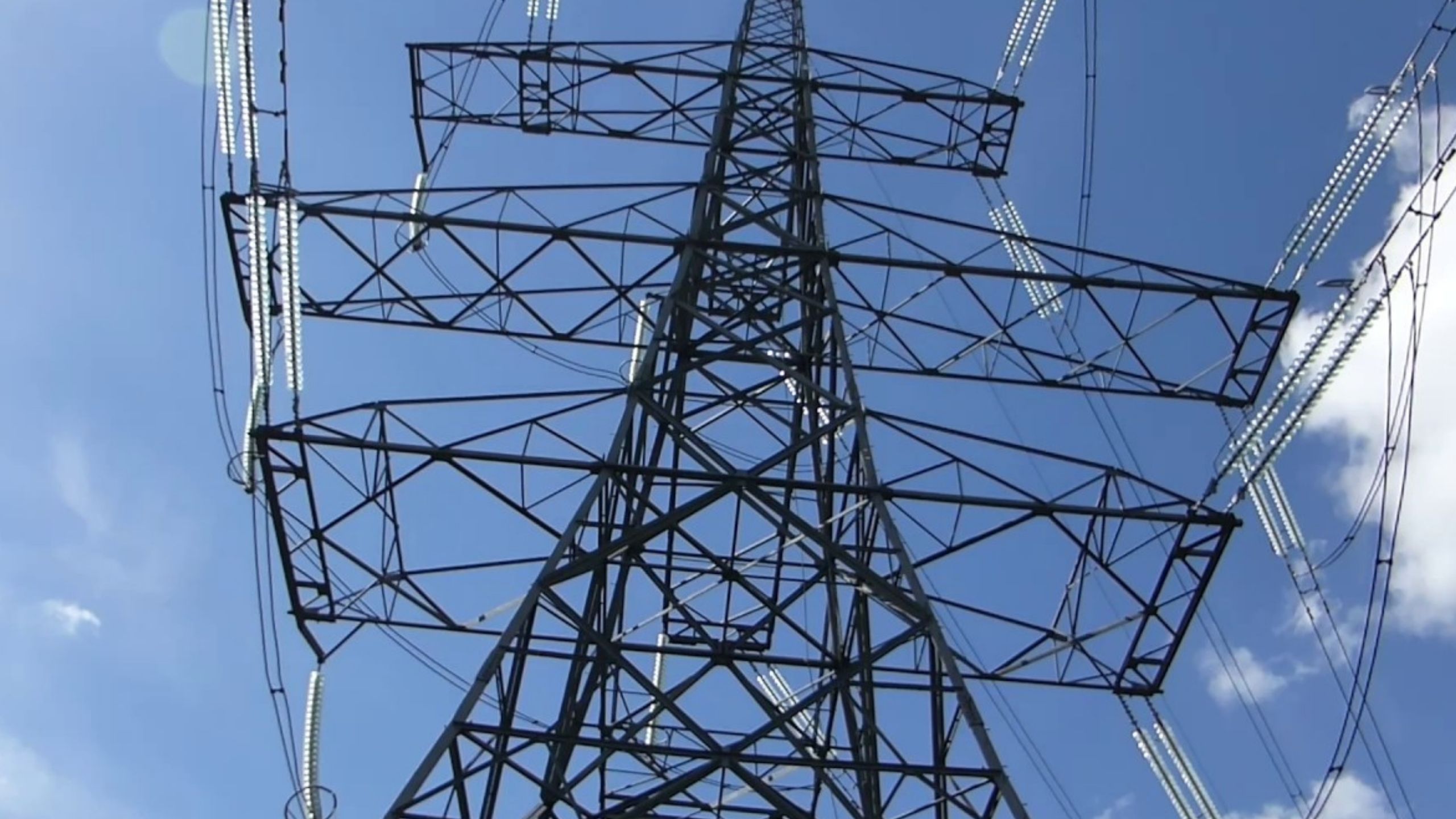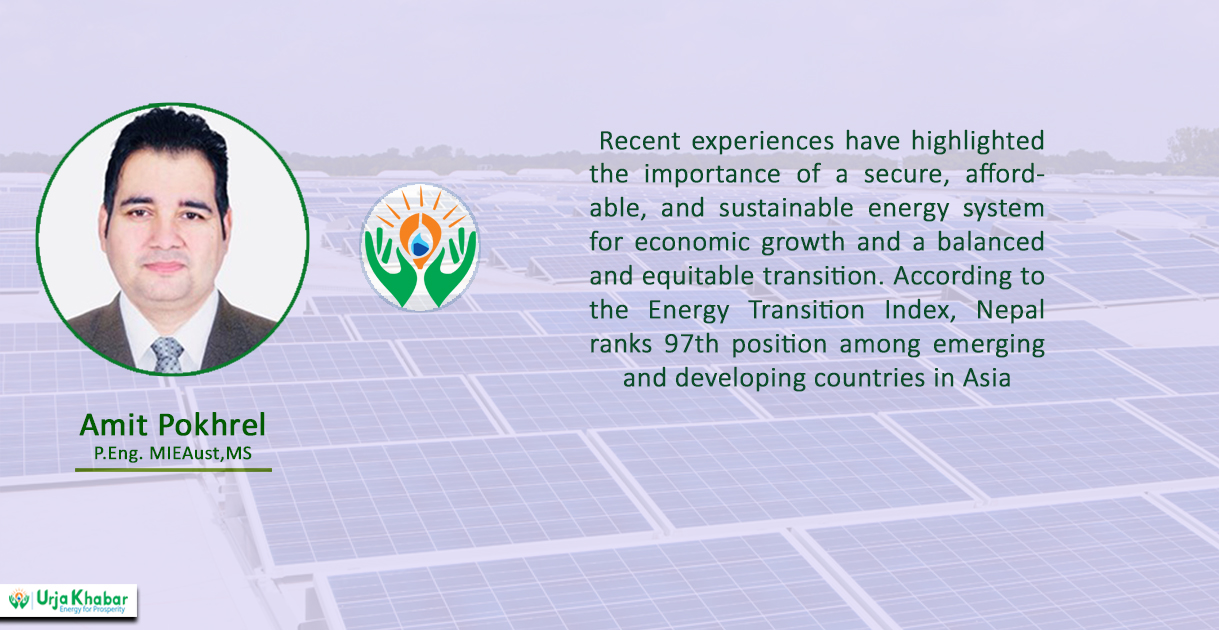Energy Update
Changing Landscape of Nepalese Power Sector

Kathmandu; Power sector refers to legal, regulatory, institutional framework and the market of power (more specifically the electricity) in the country. Evolution of Nepalese power sector started with the advent of electricity in Nepal in 1911 AD with the commissioning of Farping Hydel Power Plant (500 k W) to supply electricity to selected palaces of ruling Ranas in Kathmandu. This early power system of single power plant later became integrated system with commissioning of Sundarijal Hydel Power plant (640 k W) in 1934 AD. Both of these power plants and the associated integrated transmission distribution system was owned and operated by the state owned institutional entity “Bijuli Adda”. After 28 years of advent of electricity and operation of state owned power system in the country, Padma Sundar Malla constructed and commissioned 1600 k W Hydel Power Plant at Letang (Shikharbas) in 1939 as private initiative under the title of Morang Hydro Power Co. Limited. Morang Hydro Power Co supplied electricity to local households in nearby areas including Birat Nagar in isolated mode.
Thus initial power sector activities until 1950 were confined to limited areas including state owned integrated power system within Kathmandu valley supplied from Farping and Sundarijal Hydel Power Plants as well as isolated power system owned and operated by Morang Hydro Power Co. around Birat Nagar supplied from Shikharbas Power Plant. Following this development, a 225 k W diesel generator was installed in Birgunj to supply electricity in isolated mode to local households and small scale industries in the town. To cater the increasing demand of electricity of Kathmandu, Mahendra Diesel Station (1696 k W) was installed in Kathmandu in 1956 as add on to Integrated Power System of Kathmandu.

Era of Periodic Plan in Nepal for Development
Nepal entered into the era of periodic plans for development for the first time in 1956, when First Periodic Plan (1956/57 to 1960/61) was launched. Program and activities of power sector during this firs plan period were mostly concentrated in expansion and reinforcement of Integrated Kathmandu power System. This included installation of two 250 k W diesel generators at Teku and one 250 k W diesel generator at Bhaktapur in 1959/60 whereas installation of two 500 k A diesel generators at Lainchaur and one 500 k W diesel generator at Naxal was completed in 1961. These installations served as stop gap measures before completion of Trishuli Hydel Project (18000 k W) and Panauti Hydel Project (2400 k W) planned for implementation in following plan period.

Country witnessed a political change when King Mahendra seized political power through a coup on December 15, 1960 followed by imposition of party-less Panchayat as political system in the country. Due to this political turmoil, second periodic plan was launched as Three Year Interim Plan (1962/63 to 1964/65). By the end of this Second Interim Plan Period, Panauti Hydel Project was commissioned and interconnected to Integrated Power System of Kathmandu valley; old 225 k W diesel generator of Birgunj was replaced with new 560 k W diesel generator, Dharan and Nepalgunj were electrified through installation of 200 k W and 300 k W diesel generators respectively under state initiatives.
Besides the activities on generation expansion, old 2.3 k V distribution system of Kathmandu valley was upgraded to 3.3 k V and 11 k V system and a strong double circuit 11 k V ring-main system of capacity 20 MW was developed as distribution backbone of Kathmandu valley during this plan period. This Second Interim Plan Period has another historical significance also. It was for the first time in 1965 when Integrated Kathmandu Power System stepped out of valley and got connected with central Terai region of the country through 80 miles long Trishuli - Kathmandu - Hetauda – Birgunj 66 kV transmission line in 1965. This electrical connectivity not only contributed to national integration in political terms but converted Integrated Kathmandu Power System to the status of Integrated Nepal Power System.
Sector Structure by the end of Third Periodic Plan
Third periodic Plan (1965/66 to 1969/70) made commendable progress in power sector as government had the vision to electrify all district head quarters be it through isolated diesel generators. Third plan period is regarded as a mile stone in the evolution of power sector in the country as the sector had gained following legal, regulatory, institutional and market structure by the end of this plan period:
(a) “Canal, Electricity and Related Water Resources Act 2024 (1967)” and “Electricity Regulations 2025 (1968)” were issued as the legal and regulatory framework of the sector. Prior to issuance of this legal and regulatory framework of the sector “Protection of Essential Necessities Act 2012 (1955)”, “Essential Services operations Act 2014 (1957)” and “Town Panchayat act 2019(1962)” were attracted in development and operation management of power sector.
(b) Corporatization from direct operations from government was already introduced in the Power Sector with promulgation of Nepal Electricity Corporation Act 2019 (1962) under which Nepal Electricity Corporation (NEC) was incorporated as a bundled utility. Institutionally the sector had presence of public sector represented by Electricity Department (HMG) and Nepal Electricity Corporation (NEC) and private sector represented by captive power plants of industries as well as few electricity supply companies.
Combined generation capacity of public sector was 32506 kW whereas combined generation capacity of private sector (captive plants of industries like Birgunj Sugar Mills, Bhairahawa Sugar Mills, Janakpur Cigarette Factory, Birat Nagar Jute Mills and Duhabi straw Board etc as well as electricity supply companies like Morang Hydro, Dharan Electric and Bageswari Electric Nepalgunj) was 9160 k W. Out of this total capacity of 41702 k W, 31506 k W was integrated in Nepal Power System and rest of the capacity was operated under various isolated networks. A number of small hydro-electric power plants near to some district head quarter were under construction with purpose of electrifying the district head quarters with priority. Major Electric Utilities (NEC, Dharan Electric Co., Morang Hydro and Pokhara Hydro-power Center) had total of 43569 consumers. This 43569 figure of number of consumers was constituted by 593 industrial, 41719 domestic, 37 commercial, 1219 street light consumers and 1 consumer of public category.
(c) Electricity Distribution network supplied by Integrated Nepal Power System (INPS) was managed by public utility Nepal Electricity Corporation and hence market model of the sector remained in monopoly except few isolated networks as niche markets of private or community operated small and mini power plants including the one managed by Butwal Power Company (BPC).
Sector Structure from 1971 to 1985
Sector continued to grow in the previous structure. No major changes were apparent in legal and regulatory framework and market compared to previous one. State investment in the development of the sector was increased. As a change in institutional framework, special purpose development boards were constituted to undertake the construction of power projects with state investment or grant funding from friendly countries Electricity.
Thus electricity projects completed by Electricity Department or development boards were then handed over to Nepal Electricity Corporation with the capitalized amount as government equity in NEC. Sunkoshi hydropower project, Kulekhani 1 and 2 hydropower projects, Marshyangdi Hydropower Project, Gandak hydropower project and dozens of small, mini and micro-hydropower projects were developed by Electricity Department or special purpose development boards and handed over to NEC during this period. Shares of Dharan Electric Company were acquired by the government and Eastern Electric Company (EEC) was established as public utility to undertake electricity business in eastern Nepal covering the business area of already liquidated Morang Hydro Power Co. EEC was later merged into Nepal Electricity Authority.
Panchayat Political System got ratified from public through the referendum in 1979 conducted after agitation against this system. But the post referendum Panchayat System was modified with introduction of voting right to people to elect their Panchayat leaders to address the public sentiments against the system. This introduced popular politics within Panchayat system. Electrification became one of the main agenda for Panchayat elections as peoples’ aspirations were heightened from their Panchayat leaders. Country had limited financial resources and hence loan from International financing Institutions (IFIs) was perceived as source of financing.
But IFIs were not comfortable with prevailing sector structure where market monopoly was distributed among many state owned entities. IFIs suggested single institution of authority status for accessing to their funds and ultimately all existing public entities including Electricity Department, Development Boards and Nepal Electricity Corporation (after merger of Eastern Electricity Corporation) were merged together to establish Nepal Electricity Authority under Nepal Electricity Authority Act 2041 (1984). Thus NEA came into existence on August 17, 1985 with an objective of strong state monopoly in power sector. The sector structure after establishment of NEA can be characterized as:
(a) Nepal Electricity Authority Act 2041 (1984) remained as legal framework for governing the Electricity Sector. This Act conferred power to NEA to issue required Bylaws for development and operational management of the sector. These Bylaws served as the regulatory framework of the sector.
(b) NEA, in its authority status, remained as the only entity responsible for planning, regulating, developing, operating and maintaining the whole power sector. With exception of small networks owned and operated by Butwal power Company and Niche market of private or community based small, mini and micro hydropower projects; whole of the electricity infrastructure (generation, transmission, distribution and system operation) was owned and operated by NEA.
(c) The electricity market remained in strong monopoly of state controlled by single entity NEA in authority status. In fact this was the objective of establishing NEA.
This sector structure remained in existence until 1991 prior to promulgation of Electricity Act 2049 (1991).
Sector Structure after Promulgation of Electricity Act 2049 (1991)
After the popular political movement of 1990, country witnessed another political change with restoration of multi-party democracy under constitutional monarchy in the country. Worldwide trend of economic liberalization became agenda in the country and Nepalese power sector did not remain exception to it. With this wave of economic liberalization, Nepalese power sector witnessed following major changes:
(a) Electricity Act 2049 (1991) and Electricity Regulations 2050 (1992) were issued as new legal and regulatory framework of power sector in the country. Electricity Tariff Fixation Rules were also issued to supplement the regulatory framework and Electricity Tariff Fixation Commission was established as Retail Tariff Regulator in the country. This new legal and regulatory framework curtailed the authority statute of NEA and NEA remained as vertically integrated business entity only although no amendments were made to Nepal Electricity Authority Act 2041.
(b) Under this legal framework, interested public or private entities could seek for a license for generation, transmission and distribution business of electricity and could develop related infrastructure and operate business under BOOT Model. This provision not only required NEA also to seek license for its business operations but opened door for private sector for commercial investments in power sector causing a major institutional restructuring of the power sector.
(c) In the new institutional framework, Ministry of Water Resources and Water and Energy Commission under the ministry were deemed to assume the role of sector planner, Ministry of Water Resources as Sector Regulator with Electricity Tariff Fixation Commission as Retail Tariff Regulator, Department of Electricity Development as implementing agency, NEA and private sector as operating agencies of power sector.
(d) Although the legal and regulatory framework conceives multiple parties in the business in the sector so it definitely does not conceive a monopoly market of electricity in the country. But since no sincere efforts were made by the government for establishment of multi-buyer multi-seller market of electricity in the country, practically the market remained in single buyer model and this market model is retained till date.
There was overwhelming response from private sector in generation business under this sector structure. But requisite regulations and procedures were not issued for facilitating participation of private sector in transmission business on commercial basis.
Although Transmission Licenses for dedicated delivery transmission infrastructure of generation projects were issued but cost of such transmission infrastructures was deemed to be recovered through generation revenue. Due to this, transmission business is still under state monopoly entertained through NEA.
Sector Structure Post Political Change of 2006
Country faced a decade long armed internal conflict raised by Maoists and various efforts were made to safely land this armed movement. King Gyanendra had derailed the constitution by capturing power and sidelining the mainstream political parties unconstitutionally. Seven political parties of the country staged agitation against king Gyanendra and established communication with Maoists who were considered outfits at that time. These seven political parties managed to sign a twelve point understanding with rebellion Maoists on November 22, 2005 and this understanding became the base for a joint uprising against king Gyanendra from April 4 to April 24, 2006. Maoists actively participated in this agitation with main stream political parties.
The uprising concluded with stepping down of king Gyanendra and formation of a civic government led by leader of Nepali Congress Mr. Girija Prasad Koirala. This government signed Comprehensive Peace Agreement with Communist Party of Nepal (Maoist) on November 12, 2006. After this date, country moved on track of peace as designed by the peace accord and economic activities retarded during the conflict period started resuming. Eventually, the power sector was under pressure owing to heightened expectations of people towards electrification for access to electricity. Country started facing unpleasant load shedding from 2009 onwards owing to limited internal generation and import facilities to meet increased demand. Apart from accelerated expansion of the generation, transmission and distribution facilities, there were discussions on restructuring the sector for business efficiency.
Private sector had grown to a significant size in generation business and was asking for a level playing ground with public sector. To address the emerging sector issues, Government initiated:
(a) Drafting Law for establishment of an independent sector regulator. Accordingly Electricity Regulatory Commission Act was drafted.
(b) Drafting new Sector Law to facilitate the restructuring of sector for business efficiency through value chain unbundling. Accordingly new Electricity Act was drafted.
These drafts remained in discussion for very long time but were inconclusive. In the meantime constituent assembly passed the Constitution of Nepal 2015. This constitution after coming into force, distributed the centralized state power among three levels of state structure i.e. federation, provinces and local levels. Electricity Regulatory Commission Bill 2074 (2017) was presented in the newly elected parliament and Parliament passed the Electricity Regulatory Commission Act 2074 (2017).
Electricity Regulatory Commission was formed under this Act and is functional now. With the foresighted objective of sector restructuring through value chain unbundling, federal government established separate Vidyut Utpadan Company Limited (VUCL) and Rashtriya Prasharan Grid Company Limited (RPGCL) assuming that the unbundled business directorates of NEA could be merged with these specific business companies. But this sector restructuring should come through a new sector law.
Ultimately, government has presented Electricity Bill 2076 (2019) in the parliament for discussion. The sector is supposed to be restructured accordingly after this Bill is passed from the parliament. Thus the prevailing sector structure can be acknowledged as:
(a) Ministry of Energy, Water Resources and Irrigation and water and Energy Commission Secretariat under the ministry are assumed to be Sector Planners.
(b) Electricity Act 2049 (1991) is still the apex sector law governing the sector followed by Electricity Regulations 2050(1992).
(c) Electricity Regulatory Commission formed under Electricity Regulatory Commission Act 2074 (2017) is the sector regulator.
(d) Department of Electricity Development is the implementing agency of the sector.
(e) Vertically integrated utility NEA, Vidyut Utpadan Company Limited, Rashtriya Prasharan Grid Company Limited, private electricity generating companies, vertically integrated private company Butwal Power Company etc. are the operating agencies of the sector.
(f) Multi-buyer multi-seller market is not in existence so market is still in monopoly i.e. single buyer model.
Possible Future Landscape of Nepalese Power Sector
Nepalese Power Sector is under immense pressure for restructuring under two aspects:
(a) Sector restructuring as “Constitutional Requirement” (Federal restructuring)
(b) Sector restructuring as “Business Efficiency Requirement” (Value chain unbundling)
Constitution of Nepal 2015 has restructured the state into federal republic with distribution of state power among federal, provincial and local levels. Accordingly these three levels have exclusive and/or concurrent jurisdiction over sectors of the state function and the topics of these sectors. Respective levels will exercise their exclusive or concurrent jurisdiction over the sector or the topic of the sector after promulgation of federal sector law. Provinces and local levels will also promulgate their respective laws related to topics of jurisdiction following the federal sector law. Electricity sector is no exception to it as various topics of the sector are either exclusive jurisdiction of one of the three levels or concurrent jurisdiction of any two or all three levels of state structure.
Current sector law (Electricity Act 2049) acknowledges generation, transmission and distribution/supply of electricity as sector business activities and has provision of issuing license for these activities only. Trading of electricity is not recognized as business activity of the sector under the current legal framework. But Integrated Nepal Power System (INPS) has surpassed its generation capacity over the demand by almost 500 MW during the rainy season. This surplus is expected to grow many folds within two to three years from now despite the government efforts to increase the seasonal domestic consumption.
On the other hand, despite the increased domestic generation capacity in rainy season, supply deficit during the winter and dry season is also unavoidable due to seasonality of water discharge in the rivers. This seasonal surplus and deficit on supply side is to be managed through trading in the electricity markets across the border. Hence there is a business requirement that the legal framework of the sector acknowledges trading as business activity and includes provision of licensing for trading in domestic as well as cross border markets. But trade is not going to happen with merely issuance trading license. It further needs followings to be in place:
(a) Regulatory guidelines for trading business including the trading margin.
(b) Legal arrangements for non-discriminatory access in the transmission system.
(c) Mechanism for booking the transmission corridor including procedures for applying, approval, method of loss allocation, wheeling charge.
(d) Energy accounting, loss allocation and settlement procedures.
For functional open access in transmission, the transmission system owner and system operator is expected to be impartial entity or entities. This asks for a legal frame work of the sector to impose unbundled structure of the sector where a business entity or company cannot hold license for more than one business activity from among the generation, transmission, distribution/supply and trading. So the existing legal framework of the electricity sector is required to be replaced by a new legal frame work that facilitates federal restructuring as well as restructuring for business efficiency through unbundling of the sector into value chain based business entities.
But transition is a very sensitive process. Immediate implementation of hundred percent federal restructuring or hundred percent value chain unbundling as theoretical exercise may not be appropriate in prevailing situation. It has to be in stages otherwise might have negative impacts on ongoing power supply in terms of availability, quality and reliability. The sector restructuring should not result in further deteriorating the ongoing service. With sector operation in centralized system for very long, typical institutional knowledge has been created at central level in some cases and hundred percent federal restructuring may lose few such valuable institutional knowledge and capacities that may not be immediately and easily transferred to sub-national levels.
For example constitutionally renewable energy is the exclusive jurisdiction of local level but it is not easy to transfer the institutional knowledge and capacity attained by central level entity AEPC to related unit of local level. If not handled carefully, the collective knowledge and capacity of AEPC may get dissolved which will be great loss to country at the name of federal restructuring. Similarly constitutionally, sub-national levels i.e. provincial and local levels have certain exclusive or concurrent jurisdiction over generation, transmission, distribution/supply business. If value chain unbundling is exercised at sub-national level also the provincial and local level entities unbundled on value chain basis may be too small of business size to be sustainable.
So while restructuring the power sector with above two aspects, it should be an appropriate combination of these two dimensions to be implemented in well designed stages of transition. This appropriate combination of two dimensions of sector restructuring is to be ensured by replacing existing legal framework of the sector i.e. Electricity Act 2049 (1992) and Nepal Electricity Authority Act 2041(1984) as well as regulations and procedures following these Acts by a new legal framework that has very flexible arrangement for transition period. Federal government has already tabled Federal Electricity Bill 2076 (2020) for discussion in the National Assembly i.e. upper house of the federal parliament.
The Bill has clear provisions to acknowledge trading of electricity as the business activity. It also makes clear provisions that no business entity can have license for more than one businesses activity out of generation, transmission, distribution and supply and trading. The Bill primarily addresses the business requirement of value chain unbundling recognizing trading also as business activity of the value chain.
That way the bill tends to facilitate the liberalization of electricity market in the country. But as already mentioned above, mandatory value chain unbundling at sub-national level also will not be practical because the size of such unbundled value chain entities will be too small to be sustainable in case federal restructuring is also implemented simultaneously as implementation of constitution. Accordingly the Bill should have an article “Transitory Provisions” that outlines that value chain unbundling shall be voluntary not mandatory for at least 5 years for federal and 10 years for provincial and local level entities of power sector.
Conclusion
With a mild start of 500 k W capacity 100 years ago, Nepalese Power Sector has grown to above 2000 MW capacity today. Sector is preparing for its restructuring in terms of value chain unbundling for business efficiency and management of present day size and expected growth in near future as well as federal restructuring for implementation of constitution to allocate jurisdictions to three levels of state structure. New Federal Electricity Act is supposed to provide legal framework for this simultaneous restructuring on federal and value chain based restructuring.
This federal sector law will be followed by provincial and local level sector laws. There is a worry that hundred percent federal restructuring and hundred percent value chain based restructuring enforced simultaneously might cause serious negative impacts on availability, quality and reliability of ongoing supply. So the new Federal Electricity Act should have transitory provisions allowing flexible implementation of sector restructuring at federal as well as provincial and local level. Overnight hundred percent implementation of two dimensional restructuring may be seriously counterproductive.
The Writer is a Former Deputy Managing Director of Nepal Electricity Authority; We have taken this article from Urja Khabar Semi-annual Journal Publish on 22nd June, 2022
Conversation
- Info. Dept. Reg. No. : 254/073/74
- Telephone : +977-1-5321303
- Email : [email protected]














